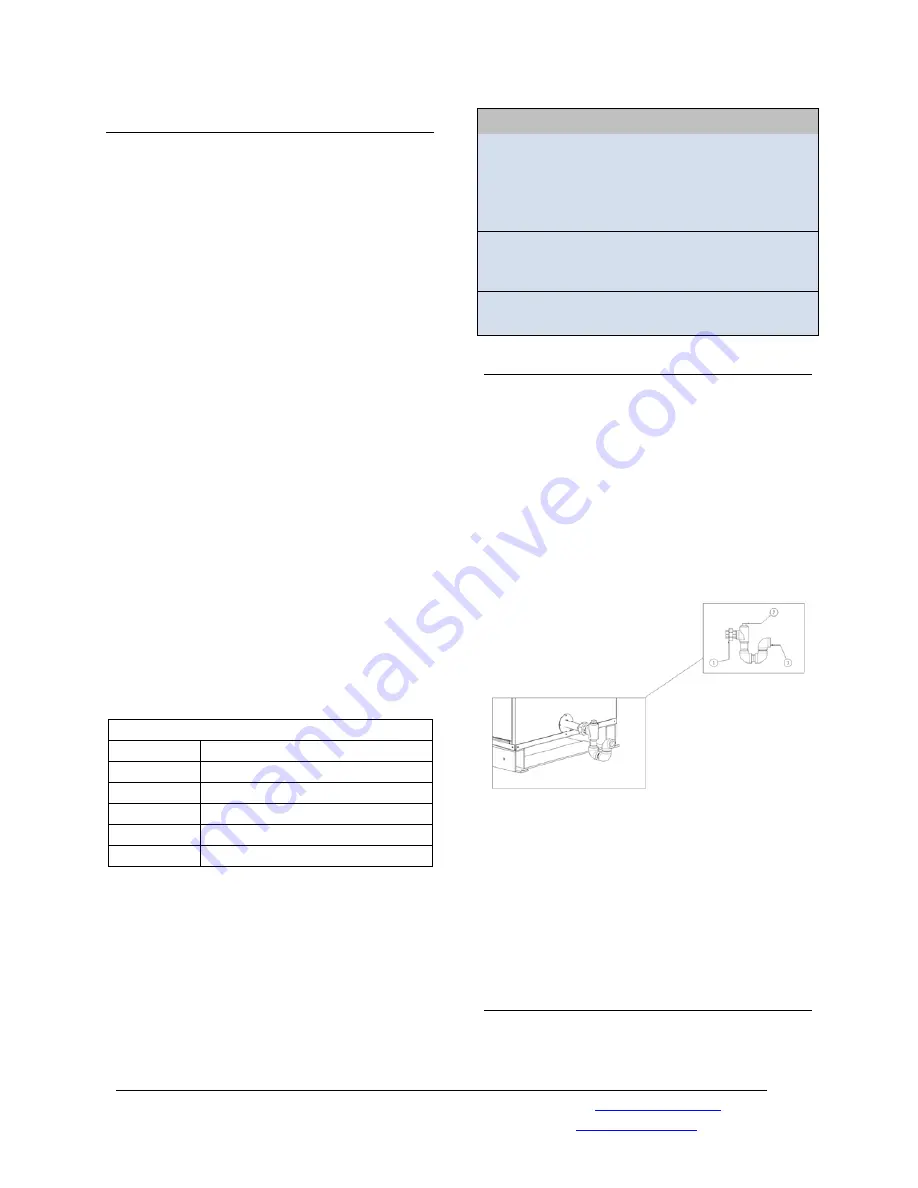
Form: 2435
Revision: 9
Free Flex Installation and Operation Manual
Date: 9-1-2017
Bryan Steam LLC, 783 N Chili Ave, Peru IN 46970
Web:
www.
bryanboilers
.com
Phone:
765-473-6651
Fax:
765-473-3074
Email:
13
3.2.6
Condensate Drain Connection
A condensate drain trap is shipped with the
boiler and is provided with a 1” nps
connection to drain the condensed products
of combustion from the boiler. Pipe with
continuous Teflon, high temperature silicone
tubing, or other tubing material compatible
with flue gas condensate. The condensate
temperature should never exceed 212
o
F and
the pH of the condensate should never have a
value lower than 3.5. NO VALVE is to be
installed in this line from the boiler to point
of discharge.
The condensate drain trap should be flushed
with water as part of your boiler maintenance
schedule to remove any debris that might
have accumulated over time.
A common condensate pump/sump may be
used. Run separate piping from each
condensate drain to the sump. A common
drain may be used to discharge condensate
from the sump. Consult pump/sump
materials of construction. If a common sump
is used, individual drain lines should be
connected such that one drain cannot back
feed into another drain. Use Table 3 for
sizing the pump / sump.
Table 3: Typical Condensate Flow Rate
Model
Max Condensate Flow (gph)
FF1000
7
FF1500
10.5
FF2000
16
FF2500
21.5
FF3000
27
Consult local authorities regarding disposal of
flue gas condensate into public waste water
system. Some jurisdictions require that
condensate be buffered before discharge. This
buffering is commonly achieved by draining
the condensate through a limestone bed.
Consult Bryan Steam or a chemical treatment
company for buffering system.
CAUTION
Failure to properly pipe the condensate
system will greatly reduce boiler life. Do
not install plugs, caps, or valves on
condensate piping.
Do not manifold boiler condensate and
vent drains together.
Do not crimp condensate lines or reduce
drain line inner diameter size.
3.2.6.1
FF1000 Condensate Drain Trap
Ensure that the condensate drain trap is filled
with water prior to running the boiler to
prevent flue gas emission to the boiler room.
It is recommended that the personnel
responsible for running and maintaining the
boiler periodically check the water level in the
condensate drain trap bend, especially, when
the boiler is operating in a non-condensing
condition for an extended period of time.
Figure 4: FF 1000 Condensate Drain Trap
1. Union Connection to the boiler
condensate drain line
2. Removable cleaning plug
3. Condensate drain outlet connection
3.2.6.2
FF1500 – 3000 Condensate Drain
Trap














































